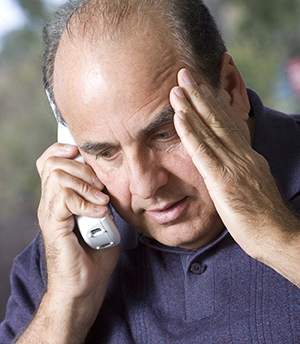A
B
C
D
E
F
G
H
I
J
K
L
M
N
O
P
Q
R
S
T
U
V
W
X
Y
Z
Topic IndexLibrary Index
Click a letter to see a list of conditions beginning with that letter.
Click 'Topic Index' to return to the index for the current topic.
Click 'Library Index' to return to the listing of all topics.
Heatstroke
Your body stays cool by sweating. This releases heat through your skin. But spending a long time in high temperatures can cause this cooling system to fail. When this happens, you stop sweating. Your body temperature may rise to very high levels. In severe cases, your brain and other vital organs may shut down. This is known as heatstroke.
Unless your body is cooled, death can occur in minutes. Heatstroke can happen in young athletes doing intense workouts outside in hot weather. This is called exertional heatstroke. It can happen to older adults or other vulnerable people who have no air conditioning in a heat wave. This is called nonexertional or classic heatstroke.
When to call 911
 |
| Don't ignore symptoms of heatstroke – get help right away. |
Heatstroke is a medical emergency.
Call 911 right away. Until help arrives, move the person into the shade or away from the heat source. Remove the person’s clothing. Fan them with air. Put cool water or wet towels or sheets on their body. If available, apply ice or cold packs to the armpits and groin area. Cover the ice or packs with a cloth before putting them next to skin. Change the towels and sheets when they're no longer cool. Continue these tasks until help arrives.
What to expect in the ER
-
To cool the body, lukewarm water may be sprayed over the body and large fans may be used to blow air over the damp skin. Ice packs wrapped in cloth may be put on the neck, armpits, and groin. Cooling blankets may be used. Or the person may be put in an ice water bath.
-
IV fluids will likely be given. These help cool the body and replace fluids.
-
Blood and urine tests will likely be done. These can help find damage to organs, especially the kidneys.
Online Medical Reviewer:
Eric Perez MD
Online Medical Reviewer:
Ronald Karlin MD
Online Medical Reviewer:
Tara Novick BSN MSN
Date Last Reviewed:
8/1/2022
© 2000-2024 The StayWell Company, LLC. All rights reserved. This information is not intended as a substitute for professional medical care. Always follow your healthcare professional's instructions.